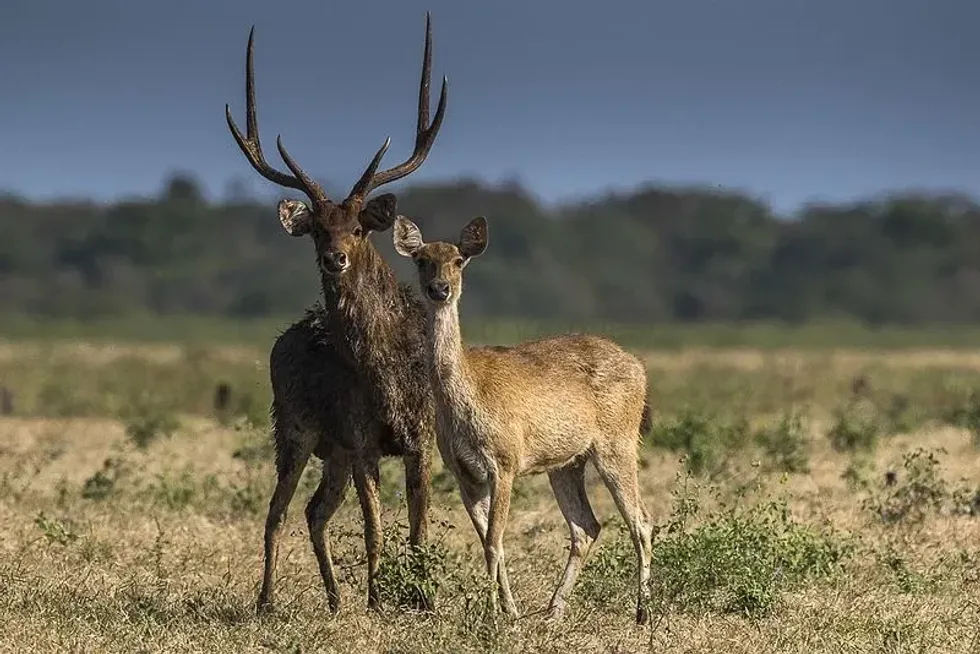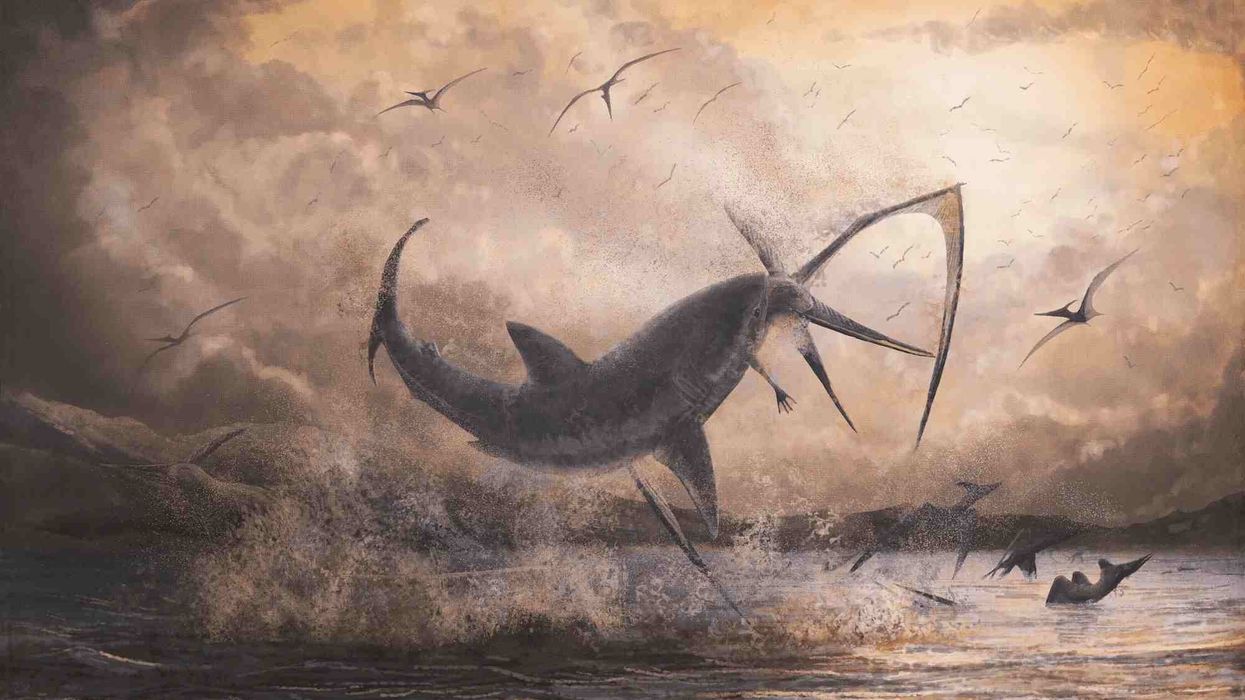Javan rusa deer, also known as Sunda Sambar (Rusa timorensis) belongs to the Cervidae family and genus Rusa. These are native to Timor, Bali, and Java and can be found in the islands of Southeast Asia. They tend to inhabit deciduous forests, grasslands, parklands, shrublands.
These deers are known to breed once a year and mating happen around July and August. Sexual maturity is reached at 3-5 years of age.
Mostly one fawn is born and rarely two are born. The conservation status of Rusa timorensis is Vulnerable and they face threats like habitat loss and climate change. These are blackish-brown in color with shorter legs.
The body length of these deer is around 56-73 lb (1420-1850 mm). The tail is 8 in (203.2 mm) long.
Males tend to be larger than females. This deer is a highly social animal and tends to be aggressive only during the breeding time or season. These deer do not make good pets as they are wild.
It is interesting to know about the Javan rusa deer (Rusa timorensis as it is scientifically known) and if you are interested, read about Saiga Antelope facts and Alpine ibex facts too.
Javan Rusa Interesting Facts
What type of animal is a javan rusa?
Javan Rusa is a species of deer.
What class of animal does a javan rusa belong to?
It belongs to the class of mammals.
How many javan rusa are there in the world?
There is no exact count of this deer recorded or estimated.
Where does a javan rusa live?
These deers can be found in almost all of the islands of Southeast Asia and are native to Bali, Java, and Timor in Indonesia.
What is a javan rusa's habitat?
The habitat of these deers is open and dry areas, deciduous forests, grasslands, savannas, shrub lands. These deers prefer to live in the boundaries or fringes of the forests.
Who do javan rusa live with?
These deer live in gender-separate herds of up to 25 deers.
How long does a javan rusa live?
These deer are known to live for about 15-20 years.
How do they reproduce?
The mating or breeding season for these deers takes place around July and August. They breed once a year. They have a polygynous system of mating, that is, deers mate with several mates.
Males produce loud, shrill calls and are aggressive during this season, and tend to fight or engage in duels with antlers. The gestation period takes place or lasts for about eight months and one or two babies or fawns are born.
Weaning is done for about 6-8 months. The fawns or the newly borns stay with the female until sexual maturity is achieved or reached, while the males leave. These deers reach sexual maturity at the age of around 3-5 years.
What is their conservation status?
The conservation status of these deers is Vulnerable as the population is declining.
Javan Rusa Fun Facts
What do javan rusa look like?

Rusa deer are known to have a blackish-brown body and the back is blackish and the underparts or inner parts of the body are yellowish-brown. The tail is also blackish-brown in color.
These deer have a gray-colored forehead. The ears of this deer are wide and also the ears of this deer, Rusa Timorensis are not proportional to the head of this deer and are shorter than that.
The legs are also comparatively shorter. The antlers are known to be medium-sized and wide or broad and the upper portions of it extend or point forward. Their fur is coarse and longer on the chest part than other parts of the body.
Fawns are known to be born without spots. Males tend to be larger than females.
How cute are they?
These are not considered cute generally.
How do they communicate?
This species of deer, like other deers, are known to use visual, chemical methods, or cues to communicate with each other. When these deer are alarmed, they are known to produce loud honks to alert the other deer nearby.
How big is a javan rusa ?
Javan rusa deer are considered to be big animals and their body length is around 56-73 lb (1420-1850 mm).
How fast can a javan rusa run?
The exact speed of this deer species is unknown.
How much does a javan rusa weigh?
The weight of males of this species is around 335–353 lb (152–160 kg) and a female weighs around 163 lb (74 kg).
What are their male and female names of the species?
The males are known as stag or buck and a female is referred to as doe.
What would you call a baby javan rusa?
A baby Javan rusa deer is known as a fawn.
What do they eat?
This species is an herbivore and mainly eats grasses and leaves. They are also known to feed on fallen fruits.
Are they dangerous?
This rusa deer is not considered to be harmful or dangerous.
Would they make a good pet?
Not much information is available about this rusa deer as a pet and it is believed that they will not make good pets as they are a wild species and their status is Vulnerable.
Did you know...
There are seven subspecies of the Javan rusa recognized. Their names are Timor rusa deer, Flores rusa deer, Moluccan rusa deer, Celebes rusa deer, Javan rusa deer, Djonga.
This species is known to shed its antlers around October and February.
The antlers of this deer are known to have medicinal purposes in Asia.
Half of the deers farmed in Queensland, Australia, are Javan rusa.
It has been observed that the Javan deer has the ability to cough the food up after swallowing to chew it again and make it easier to digest.
Javan deers are known for their adaptability to the environment and also their flexibility in food.
The primary or main predators of this species include Pythons, Crocodiles, and Komodo dragons.
These deer are primarily nocturnal animals and so graze and feed during the day.
These deer are known to have sharp and alert instincts.
The Javan rusa deer do not drink water as their requirements are fulfilled by the grass they eat.
Javan rusa was introduced in New Guinea by the Dutch around the early 1900s.
Is javan rusa a deer or antelope?
Javan Rusa or Sunda Sambar is a deer.
Are javan rusa endemic?
The Javan rusa deer is not endemic to a certain place. They are native to Timor, Bali, and Java but their populations are known to be found in Australia, New Guinea.
Here at Kidadl, we have carefully created lots of interesting family-friendly animal facts for everyone to discover! For more relatable content, check out these mammals, including asiatic black bear facts or tibetan sand fox facts.
You can even occupy yourself at home by drawing one on our Javan rusa coloring pages.










